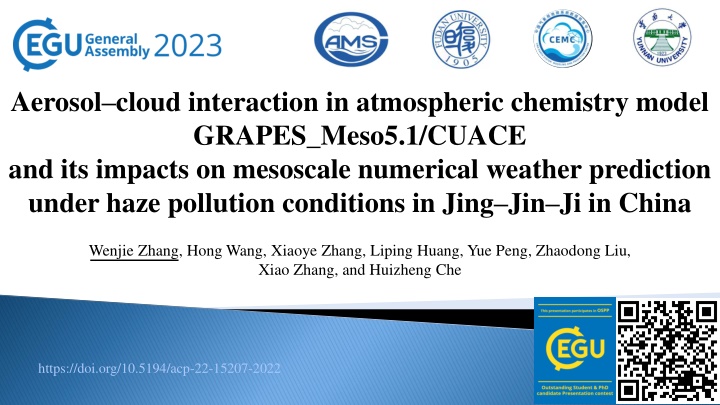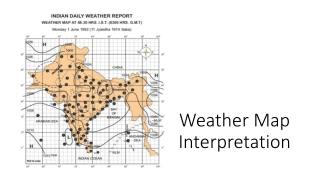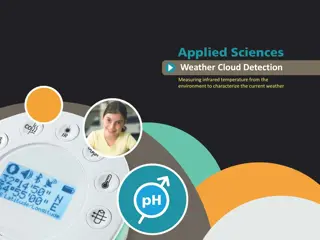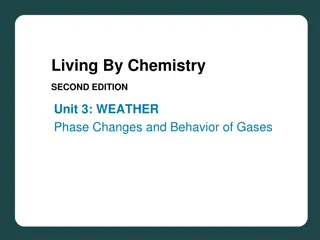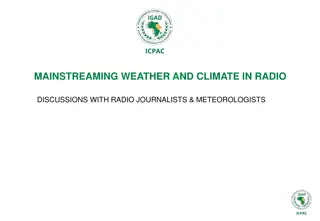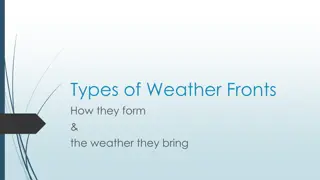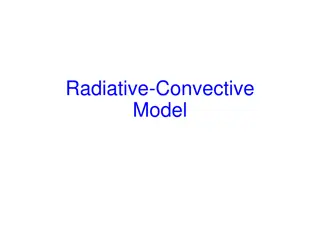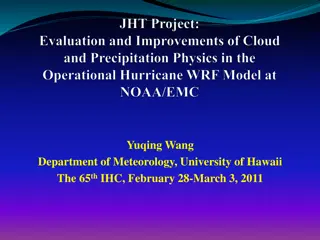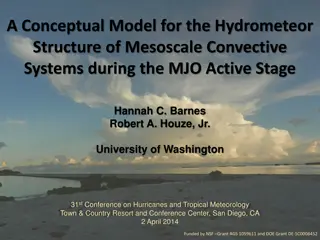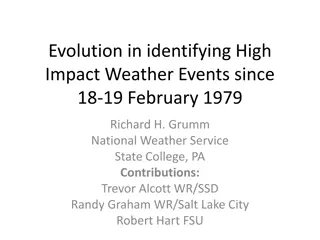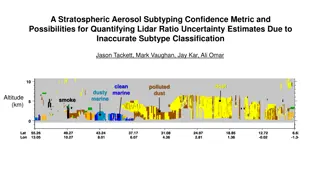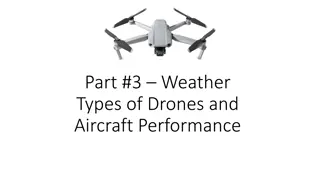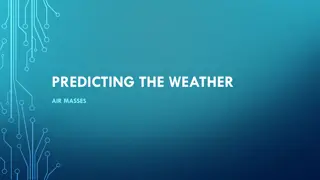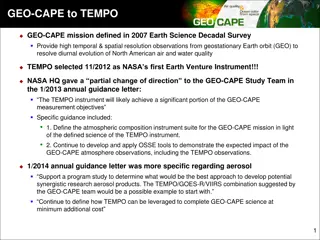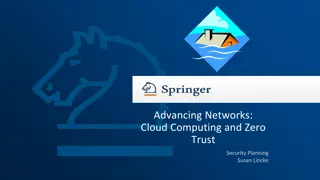Investigating Aerosol-Cloud Interaction Impacts on Mesoscale Weather Prediction
Role of aerosol-cloud interaction in mesoscale numerical weather prediction under haze pollution conditions in Jing Jin Ji, China. Implementation and impacts of ACI in GRAPES_Meso5.1/CUACE model. Results show improvements in cloud liquid water path, optical thickness, low-cloud cooling, temperature accuracy, and precipitation distribution. Variations in ACI effects over time and space are analyzed, emphasizing dependencies on cloud water content. Study conclusions highlight the significance of real-time aerosol activation in improving weather prediction accuracy.
Download Presentation

Please find below an Image/Link to download the presentation.
The content on the website is provided AS IS for your information and personal use only. It may not be sold, licensed, or shared on other websites without obtaining consent from the author.If you encounter any issues during the download, it is possible that the publisher has removed the file from their server.
You are allowed to download the files provided on this website for personal or commercial use, subject to the condition that they are used lawfully. All files are the property of their respective owners.
The content on the website is provided AS IS for your information and personal use only. It may not be sold, licensed, or shared on other websites without obtaining consent from the author.
E N D
Presentation Transcript
Aerosolcloud interaction in atmospheric chemistry model GRAPES_Meso5.1/CUACE and its impacts on mesoscale numerical weather prediction under haze pollution conditions in Jing Jin Ji in China Wenjie Zhang, Hong Wang, Xiaoye Zhang, Liping Huang, Yue Peng, Zhaodong Liu, Xiao Zhang, and Huizheng Che https://doi.org/10.5194/acp-22-15207-2022
Motivation The role of aerosol-cloud interaction (ACI) in operational numerical weather prediction (NWP) models is less considered compared with climate models Our aim is to investigate the impact of ACI on the mesoscale NWP under haze pollution conditions ACI ACI Numerical weather prediction Climate projection Days, weeks Seasonal, decadal and centennial https://doi.org/10.5194/acp-22-15207-2022
Implementation of ACI in GRAPES_Meso5.1/CUACE Water-friendly aerosol WFA Cloud water and ice effective radius Rc,Ri Diagram of aerosol cloud interaction in the model https://doi.org/10.5194/acp-22-15207-2022
The impact of ACI on the mesoscale numerical weather prediction ACI increases underestimated cloud liquid water path (CLWP) and optical thickness (COT) Low-cloud Cooling in temperature at 2 m (T2m) is closer to observations Improve the magnitude and spatial distribution of precipitation Haze pollution conditions Diagram of ACI effect on NWP https://doi.org/10.5194/acp-22-15207-2022
The significant variations of ACI effect in time and space Comparison of bias by NO-ACI and ACI ACI s improvement varies significantly in different time periods and regions Improvement depends more on cloud water content than on aerosol concentration https://doi.org/10.5194/acp-22-15207-2022 JJJ-5d: whole period JJJ: cloudy time DA: more polluted region DB: less polluted region
Summary The ACI is first implemented in GRAPES_Meso5.1/CUACE by allowing for real-time aerosol activation in the Thompson cloud micro-physics scheme ACI increases underestimated CLWP and COT, further reducing the bias of T2m and improving the magnitude and spatial distribution of precipitation ACI s improvement varied significantly in different time periods and regions, depending more on cloud water content than on aerosol concentration https://doi.org/10.5194/acp-22-15207-2022
Thank you for listening! More details are in the published article: Zhang, W., Wang, H., Zhang, X., Huang, L., Peng, Y., Liu, Z., Zhang, X., and Che, H.: Aerosol cloud interaction in the atmospheric chemistry model GRAPES_Meso5.1/CUACE and its impacts on mesoscale numerical weather prediction under haze pollution conditions in Jing Jin Ji in China, Atmos. Chem. Phys., 22, 15207 15221, https://doi.org/10.5194/acp-22-15207-2022, 2022. Any question please contact: 20113020027@fudan.edu.cn https://doi.org/10.5194/acp-22-15207-2022
